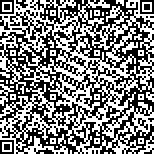| 摘要: |
| 采用扩增COⅡ、D-loop 序列、进行序列比对和系统树分析并结合形态特征观察的方法, 研究了浙江新昌光唇鱼(Acrossocheilus)的系统分类和种类鉴定。形态特征结果表明, 新昌光唇鱼具有光唇鱼属鱼类的基本特征; 扩增得到COⅡ序列全长691bp, D-loop 序列全长931—944bp, A+T 含量两基因序列都高于G+C (A+T 的含量分别为57.30%—57.80%和65.30%—65.90%), G 的含量在四种碱基中最低; COⅡ序列有6 个碱基位点存在转换, 而D-loop 则存在多个碱基的转换、颠换、缺失或插入位点。浙江新昌光唇鱼群体内COⅡ、D-loop 基因的平均遗传距离分别为0.003、0.005; 基于COⅡ和D-loop 序列构建的NJ 法系统树均显示新昌光唇鱼与温州光唇鱼(A. wenchowensis)形成一个紧密的簇, 序列相似性分别为99.94%和99.36%, 遗传距离分别为0.000、0.011, 未达到种间分化水平(遗传距离大于0.05), 表明新昌光唇鱼与温州光唇鱼为同一种, 且根据形态特征可以断定为二个不同的地理群体, 而D-loop 序列因进化速度较快更适于光唇鱼属种内及近缘物种的种间亲缘关系的研究。研究结果既有助于新昌光唇鱼资源的开发利用, 又可为研究光唇鱼类的分类提供参考资料。 |
| 关键词: 光唇鱼 COⅡ基因 D-loop 基因 序列分析 系统发育分析 |
| DOI:10.11693/hyhz20140900235 |
| 分类号: |
| 基金项目:国家星火计划项目,2011GA701001号;浙江省科技厅重大科技专项遗传育种项目,2012C12907号;浙江省海洋与渔业项目,浙海渔计[2012]83号。 |
附件 |
|
| MITOCHONDRIAL COⅡ AND D-LOOP CLONING AND THE PHYLOGENETIC POSITION OF ACROSSOCHEILUS FISH FROM XINCHANG IN ZHEJIANG PROVINCE |
|
PAN Na1, MIAO Liang1, LI Ming-Yun1, GUO Xiao-Fei1, ZHAO Liang1, CHEN Jiong1, ZHANG Yu-Ming2, LV Yi-Long2
|
|
1.Key Laboratory of Applied Marine Biotechnology, Ministry of Education, Ningbo University, Ningbo 315211, China;2.The Water Conservancy Bureau of Xinchang County, Xinchang 312500, China
|
| Abstract: |
| To clarify the taxonomy of an Acrossocheilus fish (denoted by ZJxinchang) captured from Xinchang, Zhejiang Province, China, by combining morphological observation, we amplified and analyzed the mitochondrial COⅡ and D-loop gene and constructed phylogenetic trees. ZJxinchang was similar to Acrossocheilus in external morphology. The entire COⅡ and D-loop sequences were 691bp and 931—944bp, respectively. The content of A+T was higher than G+C in both COⅡ and D-loop. The proportion of A+T were 57.30%—57.80% and 65.30%—65.90%, and the content of G was the lowest in the four bases. Only six transition sites in COⅡ gene, and several variation sites (transition, transversion, deletion, or insertion) in D-loop were determined. The average genetic distances of COⅡ and D-loop genes among ZJxinchang groups were respectively 0.003 and 0.005. Phylogenetic tree (NJ method) based on COⅡ and D-loop show that ZJxinchang and Acrossocheilus wenchowensis cluster closely, and the sequence similarity between them were 99.94% and 99.36% for COⅡ and D-loop, respectively. The genetic distances of COⅡ and D-loop between ZJxinchang and A. wenchowensis were 0.000 and 0.011, respectively; both are below species’ divergence (0.05). In addition, the results demonstrate that ZJxinchang is a geographical group of A. wenchowensis; the morphological variation between ZJxinchang and the type species of A. wenchowensis might have been resulted from different living environments. D-loop gene evolved faster than COⅡ, and it is more suitable for exploring the intra-and inter-specific comparability of genus Acrossocheilus. Therefore, the finding shall be informative to the taxonomic study, and the utilization of Xingchang A. wenchowensis resources. |
| Key words: Acrossocheilus COⅡ D-loop sequence analysis phylogenetic analysis |
